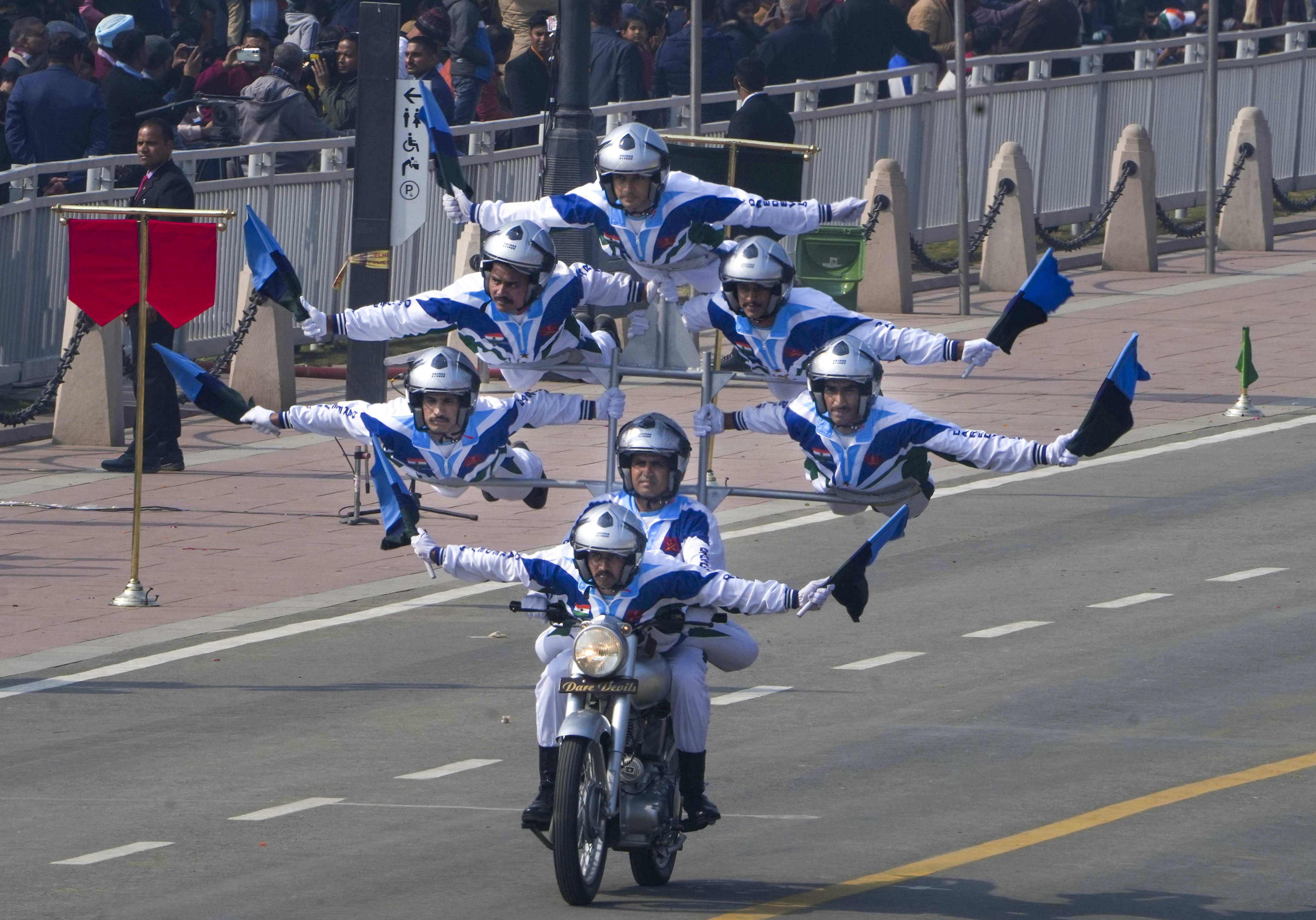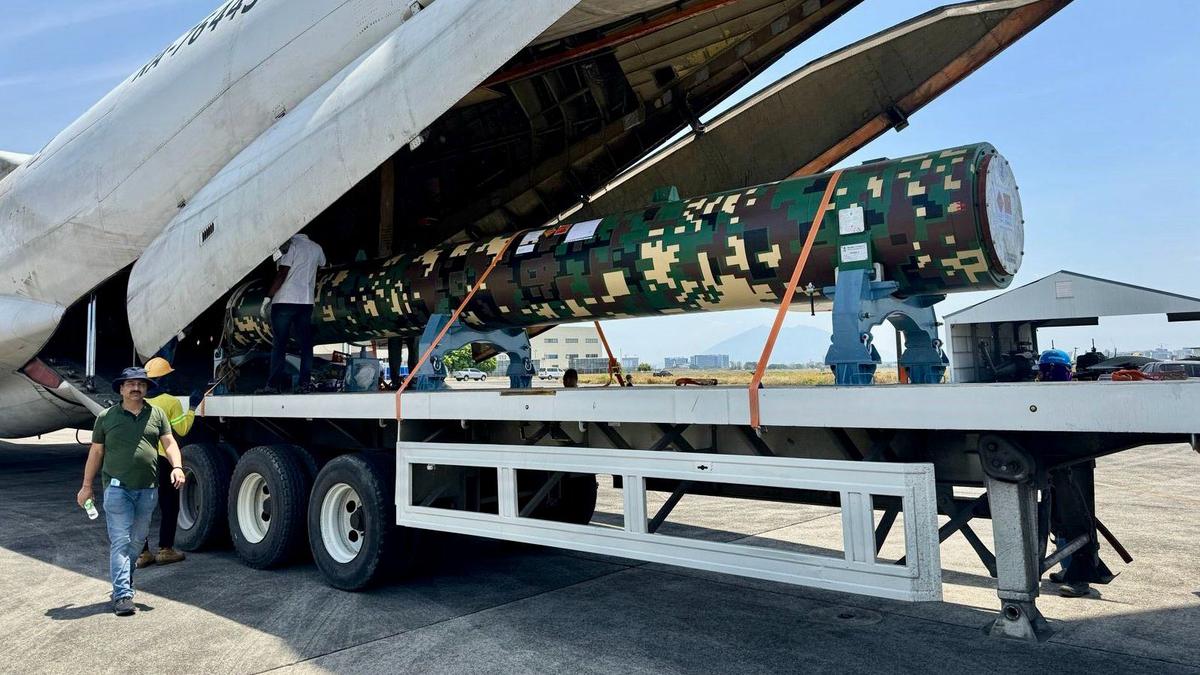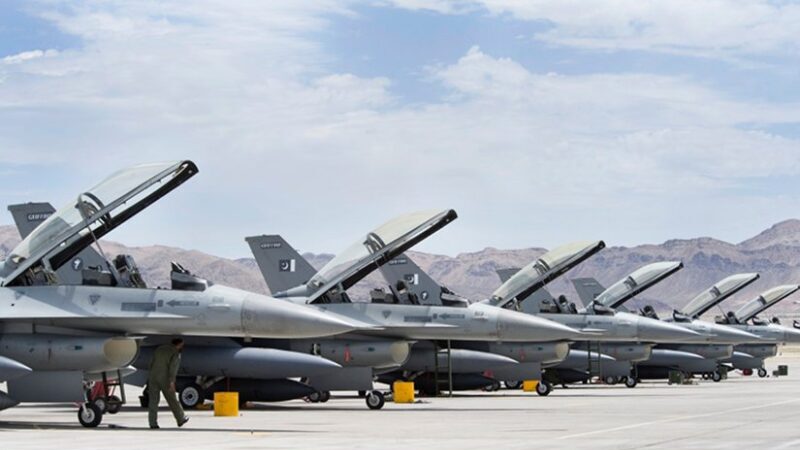Monthly Archives: January 2025
SOURCE: AFI


A stark and controversial warning sign erected by the Indian Navy near its gate in front of Dabolim Airport has stirred significant attention and surprise among locals and tourists alike. The sign, which reads “DEFENCE LAND TRESPASSERS WILL BE SHOT SURVIVORS WILL BE SHOT AGAIN,” has become a point of discussion and concern in the coastal state known for its laid-back vibe and tourist-friendly environment.
The sign, placed prominently to deter any unauthorized entry into naval property, highlights the military’s stringent security measures. Dabolim Airport, which operates from the Indian Navy’s INS Hansa base, is no stranger to military oversight, but the explicit nature of the warning has caught many off-guard. The dual use of the facility for both military and civilian purposes has often led to a delicate balance between security and public access, but this sign has brought that balance into sharp relief.
Continue readingSOURCE: AFI


In an era where modernization and indigenization are at the forefront of India’s military strategy, members of the Indian defence community are pushing for a significant cultural shift within the armed forces. They are calling for the elimination of certain colonial practices that have persisted since the British Raj, with one particular tradition drawing both criticism and ridicule from both domestic and international observers.
Among the practices under scrutiny are the elaborate motorcycle stunts performed by soldiers during ceremonial events and artillery drills. These displays, reminiscent of the British colonial era’s pomp and circumstance, involve soldiers executing acrobatic feats on motorcycles, often in full military regalia. While these performances might once have been seen as demonstrations of skill and discipline, they are now viewed by many as anachronistic and somewhat embarrassing relics of a bygone era.
Continue readingSOURCE: IDRW.ORG


In an exclusive statement to idrw.org, an official deeply versed in jet engine technology has shed light on the current status and future prospects of India’s indigenous jet engine development, particularly focusing on the Kaveri 2.0 and its derivatives. The official revealed that while advancements have been made with the Kaveri 2.0 or its derivative versions, these engines still fall within the parameters of fourth-generation technology.
“The Kaveri 2.0 or even the derivative Kaveri engine remains fundamentally a 4th generation engine,” the official stated, emphasizing that although these engines mark a significant step forward for India’s aerospace capabilities, they do not meet the advanced criteria of fifth-generation fighter jet propulsion systems. The transition to fifth-generation engine technology, which is crucial for powering advanced aircraft like the Advanced Medium Combat Aircraft (AMCA), presents its own set of challenges.
Continue readingSOURCE: IDRW.ORG

In a significant stride for India’s defense technology landscape, Guwahati-based AvGarde Systems Private Limited has clinched the first prize in the Technology Development Fund (TDF) scheme, an initiative by the Defence Research and Development Organisation (DRDO). The accolade was awarded for their groundbreaking development, the Avgarde DroneSafe system, which represents a pivotal advancement in counter-drone technology.
Avgarde’s DroneSafe system is engineered with a high-performance X-Band micro-doppler detection radar, which is central to its capability to detect aerial threats with high precision. This system is not just about detection; it’s a comprehensive solution that integrates tactical jamming and a GNSS spoofing module to enact real-time soft-kill countermeasures. These features ensure that DroneSafe can effectively neutralize potential threats without causing physical harm or collateral damage, aligning with modern warfare’s ethical considerations.
Continue readingSOURCE: AFI


The Light Combat Aircraft (LCA) Tejas has long been hailed as a success story of India’s aerospace industry, developed indigenously by Hindustan Aeronautics Limited (HAL) under the aegis of the Defence Research and Development Organisation (DRDO). The Tejas Mk1, the first variant of this aircraft, was cleared for production by the Indian Air Force (IAF) in 2013, after years of testing and development. However, despite the initial clearance and optimism surrounding the aircraft, the IAF’s orders for the Tejas Mk1 were limited.
This limited order volume, combined with various internal and external challenges, resulted in a slower-than-anticipated production pace and a series of strategic missteps that impacted the Tejas program.
Continue readingSOURCE: AFI


Paras Defence and Space Technologies Limited has announced a significant expansion in its defense manufacturing capabilities, having obtained a pivotal license from the Department for Promotion of Industry and Internal Trade (DPIIT). The license, granted under the Arms Act, 1959, authorizes the company to produce the MK-46 and MK-48 belt-fed Light Machine Guns (LMGs). This development marks a notable milestone for Paras Defence, enhancing its strategic position within India’s defense sector.
The MK-46 and MK-48 LMGs are recognized for their advanced and modernized design, offering enhanced firepower and reliability. With this license, Paras Defence is now permitted to manufacture 6,000 units of each model annually, providing a significant boost to the company’s production capacity and its role in national defense.
Continue readingSOURCE: AFI


In an impressive display of military might, the Philippine Marine Corps (PMC) has released a video that highlights its newly acquired BrahMos missile systems, marking a significant upgrade to the country’s coastal defense capabilities. The video, which has stirred considerable interest both domestically and internationally, underscores the strategic shift towards enhanced maritime security in the face of regional challenges.
The BrahMos missile, known for its supersonic speed and precision, has been described as a game-changer in the realm of anti-ship and land attack capabilities. Developed through a joint venture between India’s DRDO and Russia’s NPO Mashinostroyeniya, the BrahMos is renowned for its speed of Mach 2.8 and a range of approximately 290 kilometers in its export version. The PMC’s acquisition of this system is part of a broader initiative to bolster the Philippines’ defense posture, particularly in the contested waters of the South China Sea.
Continue readingSOURCE: AFI


In a notable advancement for India’s aerospace engineering sector, Delhi-based DG Propulsion Private Limited (DPPL) has successfully executed a vertical test run of its indigenous DG J40 micro jet engine. This achievement not only underscores India’s growing capabilities in aerospace technology but also sets the stage for future innovations, particularly in the realm of manned jetpack systems.
The DG J40, designed for unmanned aerial vehicles (UAVs) and defense applications, boasts a thrust capacity of up to 40 kgf, making it the most potent engine in DPPL’s current lineup. The vertical test run was a rigorous trial, pushing the engine through various operational challenges including fluctuating throttle settings and rapid RPM changes. This test not only confirmed the engine’s reliability but also its potential for diverse applications beyond traditional UAVs.
Continue readingSOURCE: AFI


In a significant stride towards enhancing the self-sufficiency of Indian peacekeeping forces abroad, the Indian contingent deployed in Lebanon under the United Nations Interim Force in Lebanon (UNIFIL) has been equipped with Indian-manufactured Quick Reaction Force (QRF) vehicles for the first time. These vehicles, crafted by Tata Motors, are slated to be delivered to the Indian battalion on Army Day, celebrated on January 15.
Currently, around 900 Indian troops in Lebanon utilize Swedish-made Sisu vehicles, which have been provided under the UN’s dry lease system. Under this arrangement, the United Nations is responsible for supplying all necessary equipment, including vehicles and weaponry, while the troop-contributing countries like India provide the personnel. This is in contrast to the wet lease system employed in other missions where Indian battalions bring their own equipment.
Continue readingSOURCE: RAUNAK KUNDE / NEWS BEAT / IDRW.ORG


In a revealing conversation with idrw.org, an Indian Navy official stated that the Rafale M, which the Indian Navy plans to acquire from France, significantly outclasses China’s modernized J-15B and J-15D carrier-based combat aircraft in all combat capabilities. This assessment comes amidst ongoing evaluations of naval aviation assets and their strategic implications in the Indian Ocean Region.
The Rafale M, a naval variant of the renowned French Rafale fighter, is designed specifically for carrier operations and is equipped with advanced avionics, weaponry, and a robust airframe suited for the rigours of naval combat. According to Navy officials, the J-15B and J-15D, derivatives of the Soviet-era Sukhoi Su-33, still grapple with numerous inherited design issues that have not been fully resolved despite significant Chinese investment.
Continue readingSOURCE: RAUNAK KUNDE / NEWS BEAT / IDRW.ORG


The Aeronautical Development Agency (ADA) might be exploring the addition of a second seat to the Advanced Medium Combat Aircraft (AMCA), India’s ambitious 5.5-generation stealth fighter, specifically to control combat drones. This intriguing development was hinted at in a conversation with idrw.org, where an ADA official neither confirmed nor denied the possibility of a two-seater AMCA variant emerging in the future.
Contrary to conventional two-seat aircraft used for training or conversion purposes, the IAF has not explicitly requested a two-seater AMCA for these reasons. Instead, the discussion revolves around operational enhancements, particularly in drone management.
Continue readingSOURCE: RAUNAK KUNDE / NEWS BEAT / IDRW.ORG


India’s ambitious Advanced Medium Combat Aircraft (AMCA) program is poised to take a significant leap forward with the expected finalization of a contract for the joint development of a 6th generation jet engine. The French aerospace company, Safran, has emerged as the frontrunner in this high-stakes collaboration, although both Rolls-Royce from the UK and General Electric (GE) from the US remain keen contenders for this partnership.
According to sources familiar with the matter, speaking to idrw.org, the program is estimated to cost around $5 billion. This substantial investment will not only fund the engine’s development but also cover the establishment of a local production line in India. The funds will facilitate the creation of prototypes and support extensive ground and inflight testing phases, ensuring the engine meets the rigorous demands of modern combat aircraft.
Continue readingSOURCE: AFI


@ang3lkenny
The Defence Research and Development Organisation (DRDO) is set to captivate audiences at the upcoming Aero India 2025 with the showcase of a scale model of the Uttam Active Electronically Scanned Array (AESA) Radar, designed specifically for integration into the Tejas MkI and MkII programs. This event, scheduled to take place in Bengaluru, will be a significant platform for displaying India’s strides in indigenous defense technology.
The Uttam AESA Radar represents a leap forward in radar technology, offering advanced capabilities for India’s light combat aircraft, the Tejas. Developed by the Electronics and Radar Development Establishment (LRDE), a DRDO laboratory, the radar is engineered to provide superior air-to-air, air-to-ground, and air-to-sea operational modes. With features like multi-target tracking, electronic counter-countermeasures (ECCM), and low probability of intercept (LPI), the Uttam radar is poised to enhance the combat effectiveness of the Tejas fighter jets significantly.
Continue readingSOURCE: AFI


At the 21st Subroto Mukerjee Seminar, Indian Air Force Chief Air Chief Marshal A.P. Singh voiced his frustration over the ongoing delay in the delivery of the first 40 Tejas aircraft, despite the order being placed well over a decade ago. The comments come at a time when regional adversaries, particularly China, are rapidly enhancing their aerial warfare capabilities, with reports confirming China’s recent test flight of a highly advanced sixth-generation fighter jet.
This scenario has sparked discussions and reactions beyond India’s borders, particularly among Pakistani social media users on X (formerly Twitter), where some handles, reportedly backed by Pakistan’s ISI (Inter-Services Intelligence), have been quick to exploit the situation. These accounts have provocatively suggested that India’s current state of fighter jet procurement could be an opportunity for Pakistan to initiate conflict to “reclaim” Kashmir, overlooking several critical strategic and economic realities.
Continue readingSOURCE: AFI


Lockheed Martin announced on January 6 via a social media post that it delivered 110 F-35 jets in 2024, hitting the upper limit of a revised production target. This number reflects a significant adjustment from the company’s initial goal of delivering 156 jets annually, a commitment made only a few years prior. The reduction in the delivery target was primarily due to delays in certifying the Block 4 software for the newly installed Technology Refresh (TR)-3 avionics system.
The F-35 Joint Strike Fighter program, one of the most ambitious in military aviation history, has faced several hurdles. Among these, the certification of the TR-3 avionics upgrade, which was supposed to enhance the jet’s capabilities significantly, proved to be a bottleneck. The Joint Program Office (JPO) halted acceptance of TR-3-equipped jets starting in July 2023, leading to a delivery hiatus that lasted until the end of last July. During this period, Lockheed Martin managed to deliver a limited number of F-35s with the older TR-2 avionics, but the overall production schedule was undeniably disrupted.
Continue reading